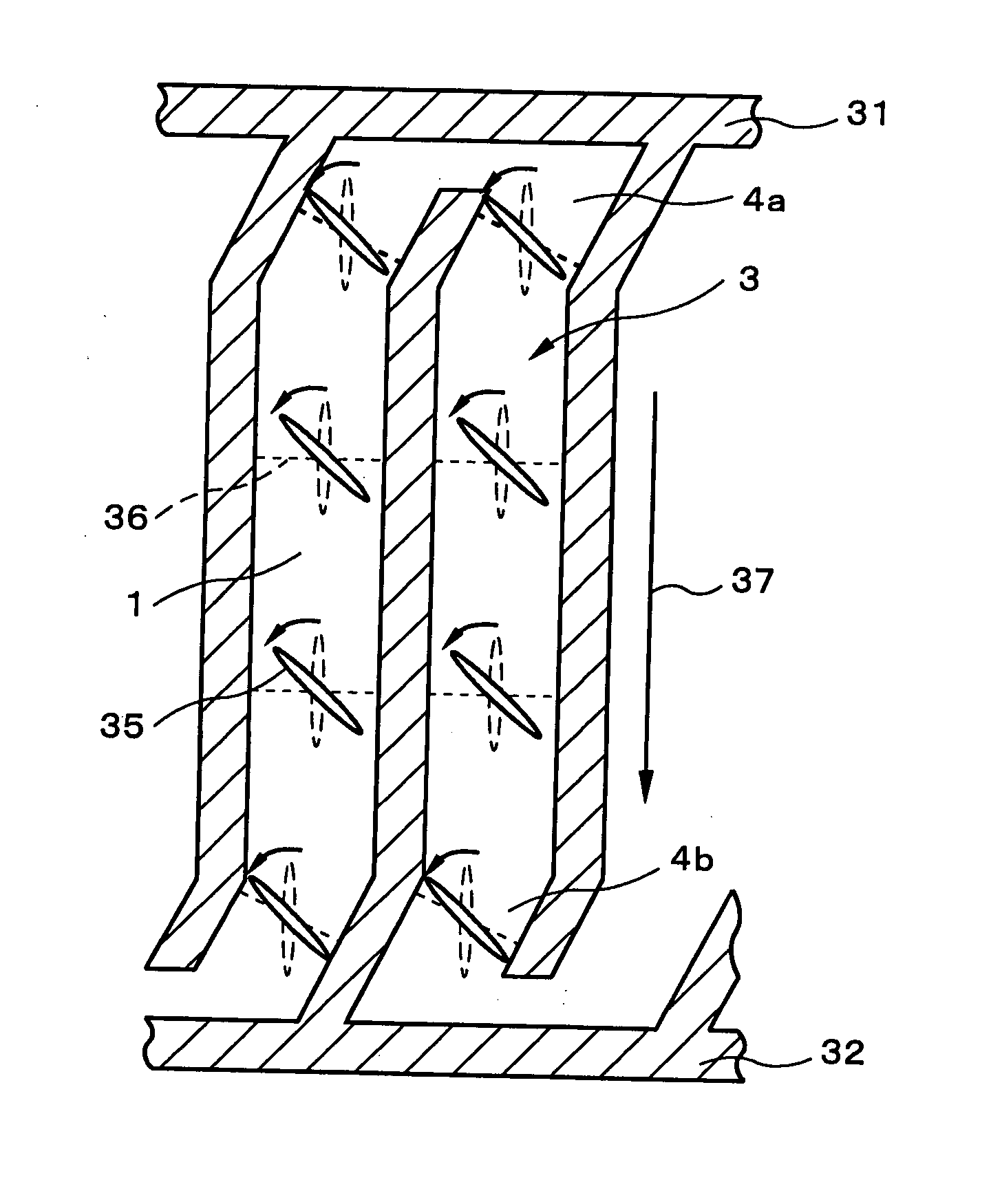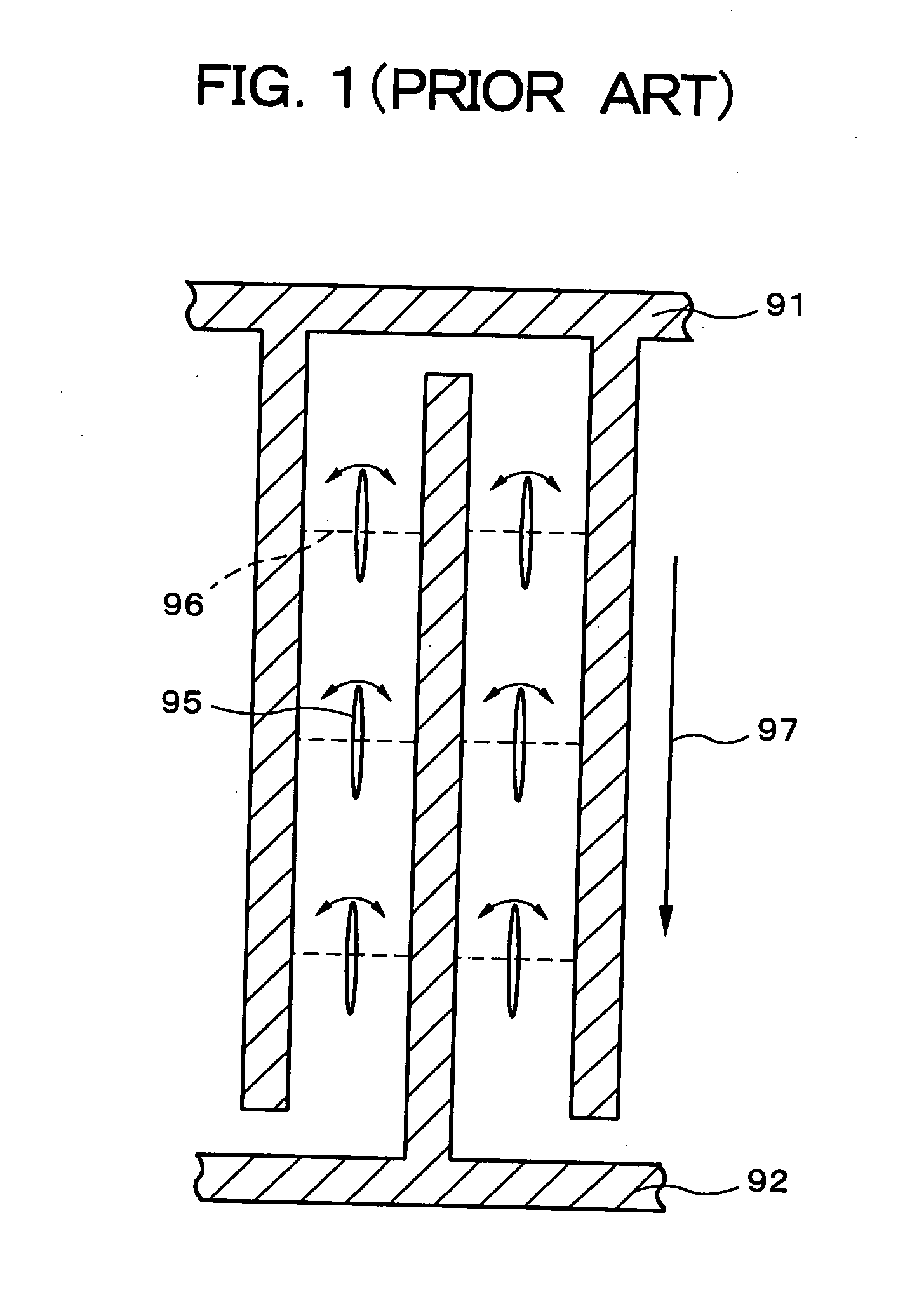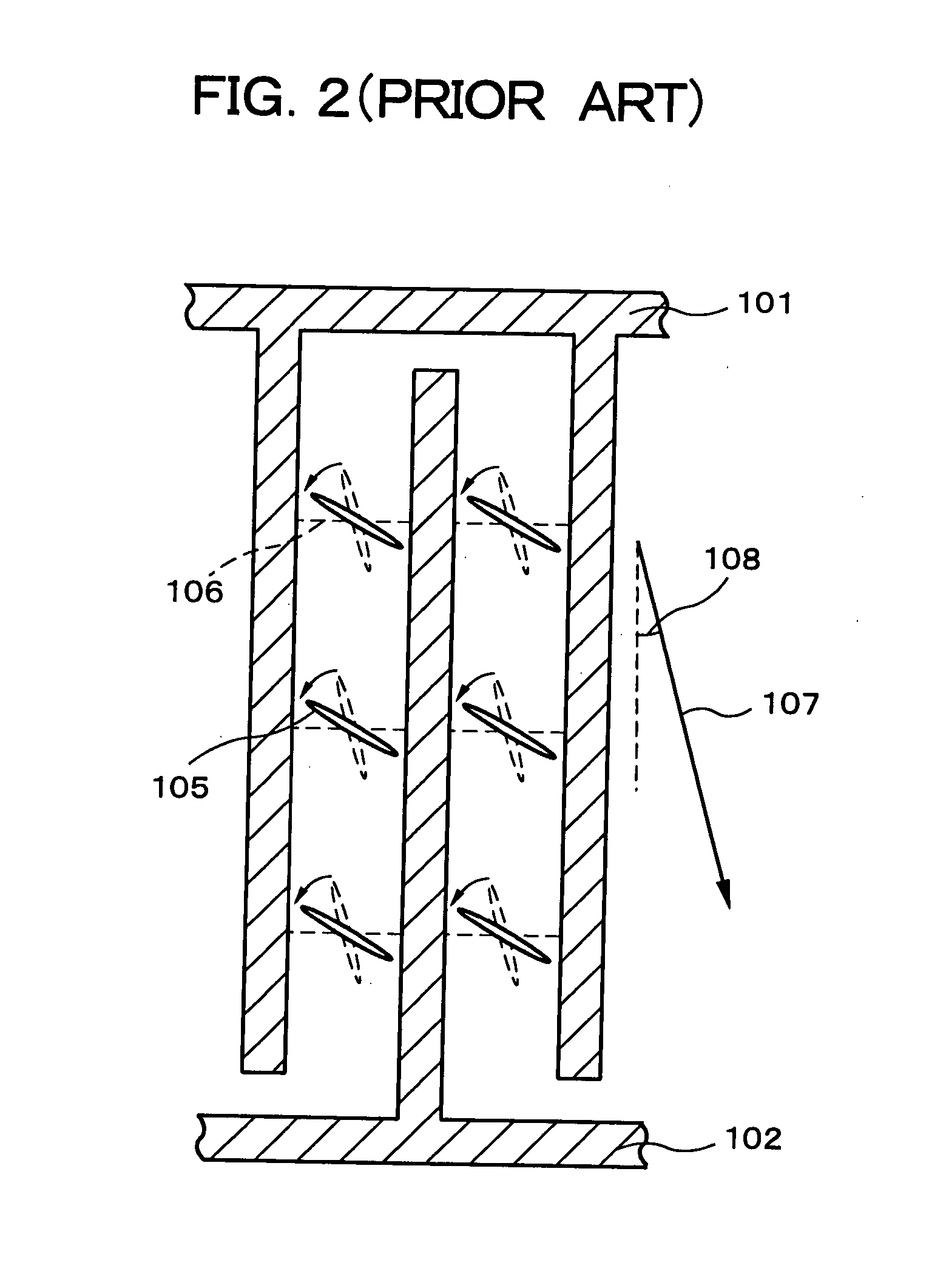In-plane switching liquid crystal display apparatus
a liquid crystal display and switching liquid crystal technology, applied in non-linear optics, instruments, optics, etc., can solve the problems of low throughput, high cost, and insufficient white luminance to achieve sufficient contrast, etc., to achieve high contrast, facilitate alignment, and high picture quality
- Summary
- Abstract
- Description
- Claims
- Application Information
AI Technical Summary
Benefits of technology
Problems solved by technology
Method used
Image
Examples
first embodiment
[0045] The embodiments of the present invention will be described in detail hereinbelow with reference to the accompanying drawings. First, the liquid crystal display apparatus in accordance with the present invention will be described. FIG. 6 is a schematic plan view showing a pixel of the liquid crystal display apparatus in accordance with the present embodiment. The plan views illustrating the embodiments herein are schematic diagrams representing the display region only.
[0046] The liquid crystal display apparatus in accordance with the embodiments of the present invention is an in-plane switching liquid crystal display apparatus that operates on an active matrix principle and has a liquid crystal layer sandwiched between a pair of opposing substrates, a display region composed of multiple pixels formed on the substrate surfaces, and a pixel electrode and common electrode formed in each pixel region on the surface of one of the substrates. An electric field substantially parallel...
second embodiment
[0054] Next, the liquid crystal display apparatus according to the present invention will be described. FIG. 8 is a schematic plan view showing a pixel of the liquid crystal display apparatus in accordance with the present embodiment. As shown in FIG. 8, a comb-shaped common electrode 31 and pixel electrode 32 are disposed mutually parallel in an interlocking fashion in a pixel to form columns 3 enclosed by the common electrode 31 and the pixel electrode 32. The initial alignment direction 37 of the liquid crystal molecules is constant throughout the. columns 3.
[0055] The pixel region between the common electrode 31 and the pixel electrode 32 in the present embodiment is composed of a principal portion 1 in which the direction of extension of the common electrode 31 and the pixel electrode 32 is parallel with the liquid crystal molecule initial alignment direction 37, and specific portions 4a, 4b not parallel with the liquid crystal molecule initial alignment direction 37. The speci...
third embodiment
[0060] Next, the present invention will be described. FIG. 10 is a schematic plan view showing a pixel of the liquid crystal display apparatus in accordance with the present embodiment. As shown in FIG. 10, a comb-shaped common electrode 51 and pixel electrode 52 are disposed mutually parallel in an interlocking fashion in a pixel to form columns 3 enclosed by the common electrode 51 and the pixel electrode 52. The initial alignment direction 57 of the liquid crystal molecules is constant throughout the columns 3.
[0061] The pixel region between the common electrode 51 and the pixel electrode 52 in the present embodiment is composed of a principal portion 1 in which the direction of extension of the common electrode 51 and the pixel electrode 52 is parallel with the liquid crystal molecule initial alignment direction 57, and a specific portion 5 not parallel with the liquid crystal molecule initial alignment direction 57. The specific portion 5 is provided in the medial portion of th...
PUM
| Property | Measurement | Unit |
|---|---|---|
| pretwist angle | aaaaa | aaaaa |
| angle | aaaaa | aaaaa |
| pre-tilt angle | aaaaa | aaaaa |
Abstract
Description
Claims
Application Information
 Login to View More
Login to View More - R&D
- Intellectual Property
- Life Sciences
- Materials
- Tech Scout
- Unparalleled Data Quality
- Higher Quality Content
- 60% Fewer Hallucinations
Browse by: Latest US Patents, China's latest patents, Technical Efficacy Thesaurus, Application Domain, Technology Topic, Popular Technical Reports.
© 2025 PatSnap. All rights reserved.Legal|Privacy policy|Modern Slavery Act Transparency Statement|Sitemap|About US| Contact US: help@patsnap.com



